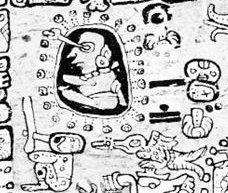241. In order to perceive in
depth it was necessary to use both eye-sights,
both the one for looking in front of your
head in order to see what
the current situation was and then with the
other one to look inside
your head in order to recall the ancient
patterns as they had been when
for instance Itzam-Yeh was defeated,
when the last creation became ready
for its pair of 'fire-rubbing sticks'.
Insight could never be
reached out in the sunlight.
|
Egyptian sticks |
 |
Phoenician
taw |
 |
Greek chi |
Χ
(χ) |
|
Greek tau |
Τ
(τ) |
|
In Plato's Timaeus, it is
explained that the two bands
that form the soul of the world
cross each other like the letter
Χ.

Roman XII =
12 → XIII = 13, with the Nose in between -
and later, after the Mouth, the cycle would
begin anew (I).
Chi or X is often used to
abbreviate the name Christ, as
in the holiday Christmas (Xmas).
When fused within a single
typespace with the Greek letter
Rho, it is called the labarum
and used to represent the person
of Jesus Christ. (Wikipedia)

... tau is the 19th
letter of the Greek alphabet. In
the system of Greek numerals it
has a value of 300 ... Taw
is believed to be derived from
the Egyptian hieroglyph meaning
'mark' ...
Taw, Tav or Taf
is the twenty-second and last
letter in many Semitic abjads
... In gematria Tav
represents the number 400, the
largest single number that can
be represented without using the
Sophit forms ...
'From Aleph to Taf'
describes something from
beginning to end; the Hebrew
equivalent of the English 'From
A to Z' ...
Tav is the last letter of
the Hebrew word emet,
which means truth. The midrash
explains that emet is
made up of the first, middle,
and last letters of the Hebrew
alphabet (Aleph, Mem,
and Tav...).
Sheqer (falsehood), on
the other hand, is made up of
the 19th, 20th, and 21st (and
penultimate) letters.
Thus, truth is all-encompassing,
while falsehood is narrow and
deceiving. In Jewish mythology
it was the word emet that
was carved into the head of the
Golem which ultimately
gave it life. But when the
letter 'aleph' was erased from
the Golem's forehead,
what was left was 'met' -
dead. And so the Golem
died ... (Wikipedia)

|
The Xul mythic animal exhibits an arrangement
similar to that of tau, hanging from
the sky-band and belching out 'serpents', 2
* 4 + 5 = 13 in all, from his 3 'torches'.
... With tail and both paws he holds flaming
torches ...
The flood depicted on the last page of the
Dresden Codex is not the same, because here
we can find no 'benben stone' in
the corresponding central 'quincunx' position:

 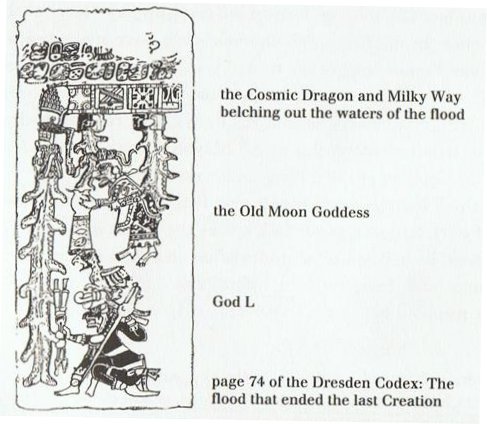
Instead of a central 'stone of fire' the
flood illustration has a kind of cross surrounded
by 4 'watery eyes', like in the Olmec World
Tree design:

... The jaguar learned from the grasshopper
that the toad and the rabbit had stolen its
fire while it was out hunting, and that they
had taken it across the river. While the
jaguar was weeping at this, an anteater came
along, and the jaguar suggested that they
should have an excretory competition. The
anteater, however, appropriated the
excrement containing raw meat and made the
jaguar believe that its own excretions
consisted entirely of ants.
In order to even things out, the jaguar
invited the anteater to a juggling contest,
using their eyes removed from the sockets:
the anteater's eyes fell back into place,
but the jaguar's remained hanging at the top
of a tree, and so it became blind.
At the request of the anteater, the macuco
bird made the jaguar new eyes out of water,
and these allowed it to see in the dark.
Since that time the jaguar only goes out at
night. Having lost fire, it eats meat raw.
It never attacks the macuco
...
... Originally the highly born family of the
Sun, Moon, and stars dwelt in a cave on the
summit of Maunga-nui, Great Mountain,
in the ancient homeland. They were not at
all comfortable in their gloomy home for
they could not see distinctly and their eyes
watered constantly ...
Counting with 320 (= 8 * 40) regular days
and with an additional 40 + 5 = 45 in order
to reach day 45 in a 365-day year beginning
with January 1 will lead us to February 14
(the day of the 'hearts' of all the cycles).
... In the inscriptions of Dendera,
published by Dümichen, the goddess Hathor
is called 'lady of every joy'. For once,
Dümichen adds: Literally ... 'the lady of
every heart circuit'. This is not to say
that the Egyptians had discovered the
circulation of the blood. But the
determinative sign for 'heart' often figures
as the plumb bob at the end of a plumb line
coming from a well-known astronomical or
surveying device, the merkhet.
Evidently, 'heart' is something very
specific, as it were the 'center of gravity'
... See Aeg.Wb. 2, pp. 55f. for sign of the
heart (ib) as expressing generally 'the
middle, the center' ...
45 = 360 / 8 and therefore the 2nd (reading
from right to left) 'Sun' figure (in the
diagram below) under the
ecliptic band could have been turned around
45º from the orientation of the 1st great
one:
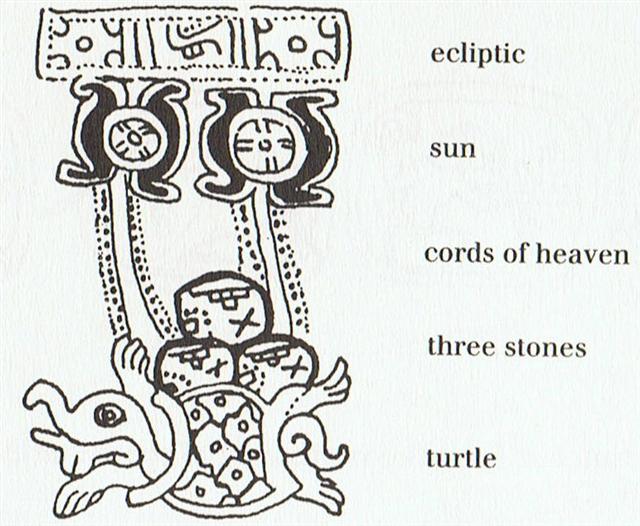
The Mayas had a wonderful calendar which
documented the whole of our current
time-space configuration:
... In three magnificent texts at the site
of
Koba, scribes recorded it as one of the
largest finite numbers we humans have ever
written. According to these inscriptions,
our world was created on the day 4 Ahaw 8
Kumk'u. On this day all the cycles of
the Maya calendar above twenty years were
set at thirteen - that is to say, the cycles
of 400 years, 8,000 years, 160,000 years,
32,000,000 years, and so on, all the way up
to a cycle number extending to twenty places
(2021 * 1360-day year).
In our calendar, this day fell on August 13,
B.C. 3114 (or September 20, -3113 in the
Julian calendar).
This reminds me of the 'contracred' henua
calendar in the G text:
...
Suggested sum: 31 * 13 = 403 = 399 (synodic
cycle of Jupiter) + 4 ...
|
APRIL 24 (*399) |
25 (115) |
26 |
27 (*37) |
| 18 April (108) |
19 (*29) |
20 |
21 (*396 = *365 + *31) |
 |
 |
 |
 |
|
Gb6-17 (399) |
Gb6-18 (171) |
Gb6-19 |
Gb6-20 (229 + 173) |
| June 27 (108 + 70) |
28 (115 + 64) |
29 (Mebsuta) |
SIRIUS (*396 - *365) |
|
... When the Arabians adopted the Greek figures they designated this star [Castor] as Al Rās al Taum al Mukaddim, the Head of the Foremost Twin; but, according to Al Tizini, the early and indigenous term was Al Awwal al Al Dhirā', the First in the Paw or Forearm. Reference was made by this to the supposed figure of the enormous early Lion, the nomads' Asad, the Outstretched Forearm of which α and β marked Al Dhirā' al Mabsutāt. This extended still further over Gemini, the other, the Contracted one, Al Dhirā' al Makbūdah, running into Canis Minor. The rest of this monstrosity included Cancer, part of our Leo, Boötes, Virgo, and Corvus ... |
|
APRIL 28 (4 * 29½) |
29 |
30 (*40) |
MAY 1 (11 * 11) |
| 22 April |
23 |
24 |
25 (115 = 121 - 6) |
 |
 |
 |
 |
|
Gb6-21 (403) |
Gb6-22 |
Gb6-23 |
Gb6-24 (177 = 6 * 29½) |
| July 1 (182) |
2 |
3 |
4 (Mekbuda) |
|
... Later on in this series of rituals, the Chorti go through a ceremony they call raising the sky. This ritual takes place at midnight on the twenty-fifth of April and continues each night until the rains arrive. In this ceremony two diviners and their wives sit on benches so that they occupy the corner positions of the cosmic square. They take their seats in the same order as the stones were placed, with the men on the eastern side and the women on the west. The ritual actions of sitting down and lifting upward are done with great precision and care, because they are directly related to the actions done by the gods at Creation. The people represent the gods of the four corners and the clouds that cover the earth. As they rise from their seats, they metaphorically lift the sky. If their lifting motion is uneven, the rains will be irregular and harmful ...
| RAIN: |
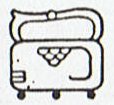 |
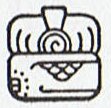 |
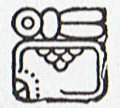 |
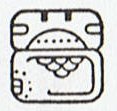 |
| Well |
Center (Green) |
North (White) |
East (Red) |
| 9 Ch'en (180) |
10 Yax |
11 Sac |
12 Ceh (240) |
| |
Macaw |
Quetzal |
Deer |
 |
 |
 |
 |
| 13 Mac (260) |
14 Kankin |
15 Moan (300) |
| Meat |
Skeleton Ribs |
Owl |
| BREAK (paxih) |
 |
 |
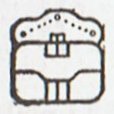 |
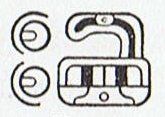 |
| 16 Pax (320) |
17 Kayab |
18 Cumhu |
19 Vayeb (365) |
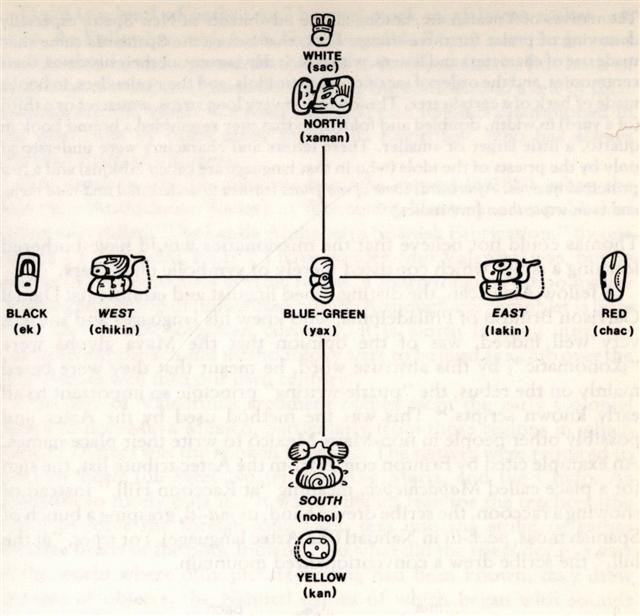
... In the Mayan structure the first 20-day month beyond high summer was Ch'en - a well: ... The sign cauac, wherever it could be pinned down, appeared as a sort of general time-count base.
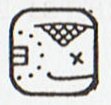
Alone, or with the wing-affix ... and with numerals, it is a fixed variant for the Tun-sign. This Morley was the first to verify. It is also the common element in the four vinal signs for Ch'en, Yax, Sac, Ceh, differentiated only by their superfixes. Ch'en means Well; Yax and Sac means Green, White; and the superfixes are the characters fully established for those colors. The superfix for Ceh means Red, but the Maya and Quiché Ceh, Quieh, mean Deer ...

... A sidelight falls upon the notions connected with the stag by Horapollo's statement concerning the Egyptian writing of 'A long space of time: A Stag's horns grow out each year. A picture of them means a long space of time.' Chairemon (hieroglyph no. 15, quoted by Tzetzes) made it shorter: 'eniautos: elaphos'. Louis Keimer, stressing the absence of stags in Egypt, pointed to the Oryx (Capra Nubiana) as the appropriate 'ersatz', whose head was, indeed, used for writing the word rnp = year, eventually in 'the Lord of the Year', a well-known title of Ptah. Rare as this modus of writing the word seems to have been - the Wörterbuch der Aegyptischen Sprache (eds. Erman and Grapow), vol. 2, pp. 429-33, does not even mention this variant - it is worth considering (as in every subject dealt with by Keimer), the more so as Chairemon continues his list by offering as number 16: 'eniautos: phoinix', i.e., a different span of time, the much-discussed 'Phoenix-period' (ca. 500 years) ...
365 + 135 (Tau-ono) = 500.
|
To understand what this means, we need a
little scale. The thirteens in this huge
number act like the twelve in our cycles -
the next hour after twelve is one. Thirteen
changed to one as each of these cycles in
the Maya calendar was completed, therefore,
we have the following sequence:
|
13. |
13. |
13. |
0. |
0. |
0. |
1. |
5
Imix |
9
Kumk'u |
(Aug. 14, 3114 B.C.) |
|
13. |
13. |
13. |
0. |
0. |
1. |
0. |
11 Ahaw |
3
Pop |
(Sept. 2, 3114 B.C.) |
|
13. |
13. |
13. |
0. |
1. |
0. |
0. |
13 Ahaw |
3
Kumk'u |
(Aug.7, 3113 B.C.) |
|
13. |
13. |
13. |
1. |
0. |
0. |
0. |
2
Ahaw |
8
Mak |
(May 1, 3094 B.C.) |
|
13. |
13. |
1. |
0. |
0. |
0. |
0. |
3
Ahaw |
13 Ch'en |
(Nov. 15, 2720 B.C.) |
|
13. |
13. |
13. |
0. |
0. |
0. |
0. |
4
Ahaw |
3
K'ank'in |
(Dec. 23, A.D. 2012) |
|
13. |
1. |
0. |
0. |
0. |
0. |
0. |
10 Ahaw |
13 Yaxk'in |
(Oct. 15, A.D. 4772) |
|
1. |
0. |
0. |
0. |
0. |
0. |
0. |
7
Ahaw |
3
Zotz' |
(Nov. 22, A.D. 154587) |
Each of the years, called a tun by
the Maya, in these dates is composed of 360
days. If we return to the Creation date with
its twenty cycles set at thirteen, we see
that it will take 41,943,040,000,000,000,
000,000,000,000 tuns for the highest cycle
to change from thirteen to one
...
The defeat of Itzam-Yeh came before
the creation of our world in August 13, 3114
BC:
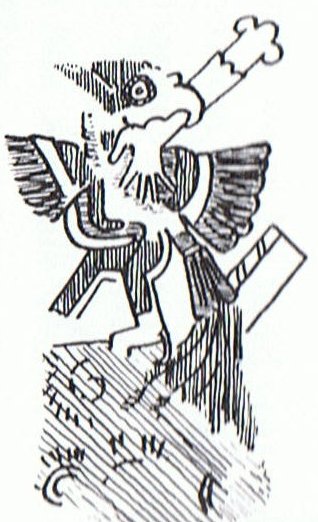
|
